What's New
Displaying results 2831 - 2840 of 4914
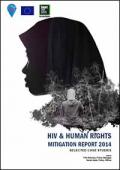
Resource | Publications,
Thirty years into the HIV epidemic, it is disheartening to note that stigma and discrimination remain a fact of everyday life for people living with HIV. The case studies highlighted in this report are testament to the many forms of attitudes, practices and systems across a wide range of sectors that continue to ‘punish’ HIV to this day.
In the past year, HIV related discrimination in educational institutions and work place settings was particularly disturbing. In spite of assurance of good health by medical experts, employees and students living with HIV were dismissed and denied educational opportunities respectively on grounds of 'ill-health'. This underscores the urgent need to review policies that were ill-informed or outdated to reflect the most recent advancement in HIV medicine.
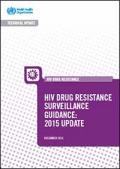
Resource | Guidelines,
To minimize the emergence and spread of HIV drug resistance (HIVDR), the World Health Organization recommends HIV treatment scale-up be accompanied by measures to monitor and improve the quality of ART delivery and surveillance of HIVDR.
This update provides an overview of the essential elements that programme managers should include in programme planning to prevent and monitor the emergence of HIVDR. It also describes programmatic relevance and use of data.
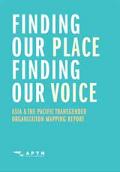
Resource | Publications,
Throughout Asia and the Pacific resources dedicated to transgender issues are extremely limited and very few are directly in the hands of transgender communities.The Asia Pacific Transgender Network mapping exercise is a crucial initiative. It contributes to progress in transgender welfare in Asia and the Pacific and to fostering stronger links across the region.
In this first attempt to map out transgender organizations, the report reflects the diverse range of amazing work being done with limited – or even no – funding. It shows the deep commitment and dedication of the transgender community across the region, whether in the area of HIV and health or in broader rights issues such as legal gender recognition, and legal protection from discrimination.
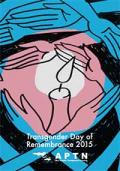
Resource | Tools,
In a climate of criminalisation, where law enforcement agencies themselves perpetrate violence with impunity, it is not surprising that violence against transgender people is underreported and inadequately investigated. In this region and globally, transgender organisations have attempted to monitor the most extreme forms of violence: when transgender people have been killed because of their gender identity. This violence remains invisible and unreported when States do not legislate against family violence and leave families to enforce social norms, standards of respectability, and morality.
The Asia Pacific Transgender Network has released a Transgender Day of Remembrance Media Toolkit and terminology resource to guide the media to a fair and inclusive coverage and reporting on transgender people.

Resource | Publications,
This study focused on factors to condom use, HIV testing, and access to services among males who have sex with men (MSM) as a key affected population. To supplement the quantitative data derived from MSM respondents of the 2013 IHBSS, this study analyzed qualitative data derived from in-depth interviews with 105 MSM participants from the 21 cities of the 2013 IHBSS. The present study looked at condom use as the primary HIV prevention strategy among MSM and HIV testing as the primary link to HIV care and treatment among MSM. The objective of the present study was to understand the drivers and barriers to condom use among MSM and the drivers and barriers to HIV testing among MSM.

Resource | Guidelines,
More than one third of the 9 million people who fall ill with tuberculosis (TB) each year are not diagnosed, not notified, or do not start treatment. Many of those who do start treatment have a delayed start due to a range of challenges. Such obstacles to receive care can result in poor health outcomes for the affected individuals, catastrophic costs for their families and continued transmission of TB to others in their communities.
The WHO has published guidelines that set out the principles for screening for active TB and provide recommendations on prioritizing of risk groups and choosing a screening approach. Screening should not be done on a mass, indiscriminate scale because this is expensive, of relatively low benefit and can result in many false positive results. One of the key principles set out in the guidelines is that screening for TB needs to be properly targeted to high-risk groups and tailored to each specific situation, depending on the epidemiological, social and health-systems contexts.

Resource | Publications,
In this report we review global progress made towards those 10 targets in advance of the critical milestone of the 2016 United Nations General Assembly High-Level Meeting on Ending AIDS and in the context of the target of ending AIDS by 2030 as part of the Sustainable Development Goals. This is an important opportunity to reflect on progress, but also to identify where gaps remain and to take action to ensure that no one is being left behind by the global AIDS response. The UNAIDS 2016–2021 Strategy aims to harness the momentum we have achieved to date. If we do not Fast-Track our efforts the number of new HIV infections and AIDS-related deaths will rebound. Investment in AIDS must not falter; in fact, in the short-term it needs to increase. Front-loading investment now will ultimately lead to greater impact and long-term cost-saving.
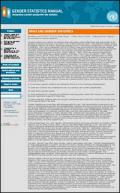
Resource | Tools,
The purpose of the present manual is to provide the methodological and analytical information necessary to improving the availability, quality and use of gender statistics in countries with less developed statistical systems. The approach and structure of the manual are based on the concept of gender mainstreaming in national statistics. Mainstreaming a gender perspective in statistics means ensuring that gender issues and gender-based biases are systematically taken into account, in the production of all official statistics and at all stages of data production. This strategic process ensures (a) that national statistical systems regularly collect, analyse and disseminate data that address relevant gender issues; (b) that gender-sensitive concepts and methods are used in data collection in all statistical fields; and (c) that the presentation and dissemination of gender statistics aim to reach a wide range of users, including policymakers, advocates, researchers and analysts whose primary concerns are not necessarily focused on gender.
Read Manual
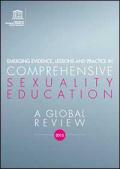
Resource | Publications,
This report provides an overview of the status of Comprehensive Sexuality Education (CSE) implementation and coverage on a global level, drawing on specific information about the status of CSE in 48 countries, generated through analysis of existing resources and studies. Best practice in terms of providing CSE continues to develop. The current report examines the evidence base for CSE and, through a series of case studies from every region, explores initiatives that are setting the standard and pioneering new practices in the delivery of CSE. It represents the first in a series of periodic reports that aims to monitor the global implementation of CSE.
Comprehensive life skills-based sexuality education helps young people to gain the knowledge and skills to make conscious, healthy and respectful choices about relationships and sexuality.

Resource | Guidelines,
This Checklist has been developed to strengthen the attention paid to gender in the implementation of programmes supported by the Global Fund to Fight AIDS, Tuberculosis and Malaria (Global Fund), through the processes and mechanisms of the Global Fund’s Funding Model. Each stage of the Funding Model requires specific actions to address the gender dimensions of HIV in the development and implementation of grants. The Checklist sets out specific steps and examples to support these gender integration efforts throughout Global Fund programming.
While this Checklist highlights the country dialogue process as the main opportunity, the national strategic plans (NSPs) for HIV, TB and malaria are also vital components. The more that gender-transformative programming is integrated into the NSPs, the more eff ectively it can be integrated into the Global Fund process.





